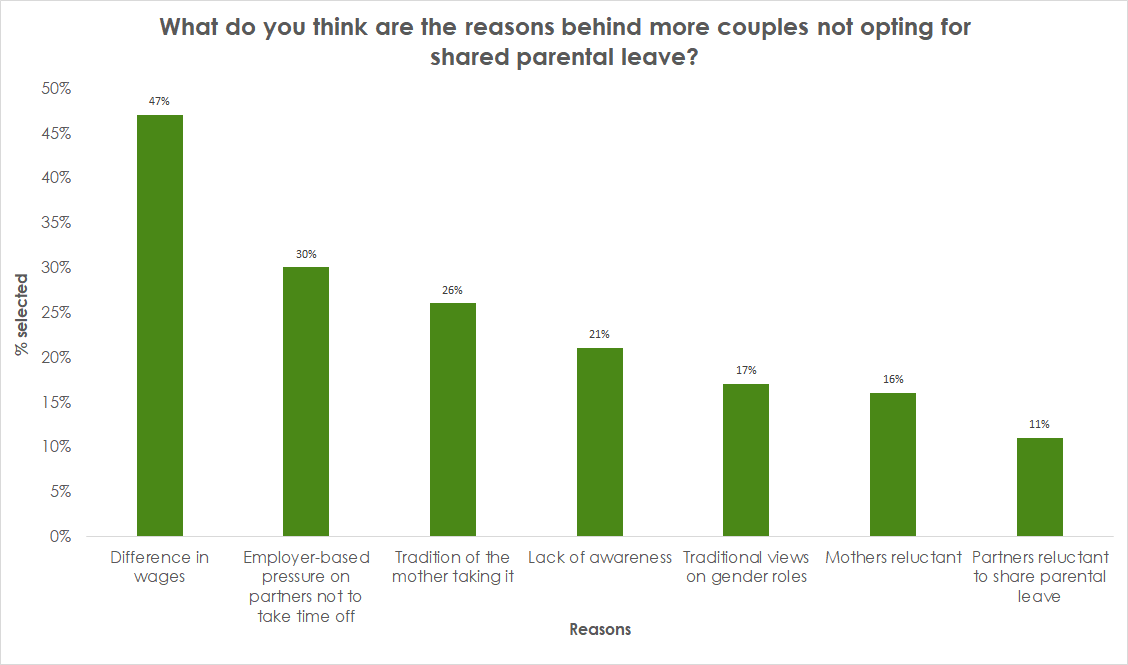Since its introduction in April 2015, shared parental leave hasn’t seen much of an uptake in the UK. As little as 5% of new fathers and 8% of new mothers have chosen to adopt the scheme. In our survey of 1,000 working people, we discovered the gender pay gap is the primary reason this is the case – and British employers are also to blame.
A huge percentage (44%) of workers have experienced, first or second hand, the difficulties women have in returning to work after having a child. Shared parental leave is a potential solution to this, but there are two key barriers holding it back.

When we asked respondents what they believe is behind the low uptake of shared parental leave, a difference in wages came out as the top choice (47%). When the gender pay gap is 9.4% for full-time employees and 18.1% for all workers, it is not difficult to see why it may not seem the most viable option financially.
Earlier in the year, MPs proposed shared parental leave as a way to help reduce the gender pay gap [3], but this research showcases the vicious cycle at play: the difference in pay is in fact the main reason people are failing to take up the initiative.
Unsupportive employers are also preventing the scheme’s success. The second most common reason for more couples not opting for shared parental leave is employer pressure on partners not to take the time off (30%).

It is clear the difficulties associated with returning to work post pregnancy need serious consideration, and the solutions proposed to help, too.
HR insight
We asked our Head of People Development, Sarah Sutton, for her thoughts on the matter: “The pay gap can be a major issue: if you are the highest earner in the family you are far less likely to take a significant amount of time off work at statutory shared parental pay (ShPP) rates of £140.98 a week. However, I would urge all employers to promote SPL nonetheless.
“The scheme gives employees the flexibility they need, and the benefits for the employer are tangible too: there’s a reduced turnover, increased staff loyalty and engagement, and it helps to create a family friendly culture.
“Employers have a duty to support their maternity and paternity leavers during and after their leave. It’s of vital importance to include leavers in regular work communications (including promotion opportunities), set up KIT days, and offer flexible working options on their return.”
For more information regarding shared parental leave, and statutory shared parental pay, see gov.uk.
Are returnships a possible solution?
Returnships - effectively an internship for any age group - are viewed as a favourable way to get women back on the career ladder. Almost half of our respondents (45%) deemed them a valuable way in which to revive a career. The main benefits are considered to be: the fact a returnship allows people to train in something new; and it being a good alternative to jumping straight back into a full-time position. There are fears, however, that not everyone can afford to do an unpaid or low-paid placement.
It must also be noted that 52% of people think that while returnships are targeted at women, men will still be interested in them after a period of unemployment.


